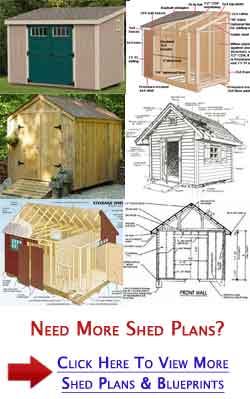![Cedarshed studio 12x6 shed [st126]](https://i0.wp.com/www.shednation.com/oscthumb.php?src=/images/cedarshed/cedarshed-studio-shed-st96-1.jpg&w=1500&h=1220&f=jpg&q=95&hash=a1b196bdc5513eb64d7a831305149a4c) www.shednation.com
www.shednation.com DIY Shed with Outdoor Lighting Fixture: A Step-by-Step Guide This guide provides a detailed walkthrough for building a small shed and installing an outdoor lighting fixture. Remember to always prioritize safety when working with power tools and electricity. Wear appropriate safety gear, and if you're unsure about any part of the electrical wiring, consult a qualified electrician.
Step 1: Planning and Preparation Before you start building, careful planning is essential. Decide on the shed size and location: Consider your storage needs and the available space in your yard. Ensure the location is relatively level and has proper drainage. Check local building codes and regulations regarding shed size and placement. Create a detailed plan: Draw a blueprint with dimensions for the shed walls, roof, door, and window (if any). Include the placement of the electrical wiring and the location for the outdoor lighting fixture. Gather materials and tools: Make a comprehensive list of all necessary materials, including lumber (for framing, siding, and roofing), concrete blocks or gravel (for the foundation), roofing materials (shingles, metal roofing), fasteners (nails, screws), a door, and the outdoor lighting fixture and associated electrical supplies (wire, conduit, weatherproof junction box). You'll also need tools like a saw, drill, hammer, level, measuring tape, square, safety glasses, and gloves.
Step 2: Building the Foundation A solid foundation is crucial for a stable shed. Prepare the ground: Clear the area of vegetation and debris. Level the ground as much as possible. Create a foundation: You can use concrete blocks, a gravel base, or a concrete slab. For a simple block foundation, place concrete blocks at the corners and along the perimeter, ensuring they are level. For a gravel base, excavate a shallow area, fill it with compacted gravel, and level the surface. A concrete slab requires pouring concrete into a form and allowing it to cure.
Step 3: Framing the Walls The wall framing provides the structural support for the shed. Cut the lumber: Cut the lumber according to your plan for the wall studs, top plates, and bottom plates. Assemble the wall frames: Nail or screw the studs to the top and bottom plates to create the wall frames. Space the studs typically 16 or 24 inches apart. Raise and secure the walls: Carefully raise the wall frames one at a time and secure them to the foundation. Use a level to ensure the walls are plumb (vertical). Temporarily brace the walls to keep them stable. Connect the walls: Connect the walls together at the corners using nails or screws. Ensure the corners are square.
Step 4: Building the Roof The roof protects the shed from the elements. Build the rafters: Cut the rafters according to your plan, ensuring they are the correct angle for the desired roof pitch. Install the rafters: Attach the rafters to the top plates of the walls, spacing them evenly apart. Sheathe the roof: Cover the rafters with plywood or OSB sheathing. Nail or screw the sheathing securely to the rafters. Apply roofing materials: Install roofing felt or underlayment followed by shingles, metal roofing, or your chosen roofing material. Follow the manufacturer's instructions for proper installation.
Step 5: Installing the Siding The siding provides the exterior finish and protects the framing. Choose your siding: Options include wood siding, vinyl siding, metal siding, or composite siding. Install the siding: Follow the manufacturer's instructions for installing your chosen siding material. Overlap the siding panels properly to prevent water penetration.
Step 6: Installing the Door The door provides access to the shed. Frame the door opening: Ensure the door opening is properly framed with sturdy lumber. Install the door: Install the door according to the manufacturer's instructions. Make sure the door swings freely and closes securely. Add hardware: Install the door handle, lock, and any other necessary hardware.
Step 7: Electrical Wiring and Lighting Fixture Installation This step requires caution and careful planning. If you're not comfortable working with electricity, consult a qualified electrician. Plan the wiring: Determine the location of the electrical outlet (if desired) and the outdoor lighting fixture. Plan the routing of the electrical wiring from the power source (usually from your house) to the shed. Install conduit: Run electrical conduit underground from your house to the shed. This protects the wiring from damage. Run the wiring: Pull electrical wire through the conduit from the house to the shed. Use the appropriate gauge wire for the intended electrical load. Install the weatherproof junction box: Attach a weatherproof junction box to the shed where the outdoor lighting fixture will be mounted. Wire the lighting fixture: Connect the electrical wires to the lighting fixture according to the manufacturer's instructions. Ensure all connections are secure and properly insulated. Test the wiring: Before turning on the power, carefully test the wiring with a multimeter to ensure there are no short circuits or other issues.
Step 8: Finishing Touches Add the final touches to complete your shed. Paint or stain the shed: Apply paint or stain to the siding and trim to protect the wood and enhance the appearance. Add shelving or storage: Install shelves or other storage solutions inside the shed to organize your belongings. Clean up: Remove all construction debris and tools from the area.
Conclusion Building your own shed and installing an outdoor lighting fixture is a rewarding project. By following these steps and taking your time, you can create a functional and attractive storage space that will serve you for years to come. Remember to prioritize safety throughout the process and consult professionals when needed. Enjoy your new shed!
Dcor Design Pracchia 7 X 10 Wooden Storage Shed
 www.wayfair.co.uk
www.wayfair.co.uk Amish-crafted Edgemont Wood Garden Shed
 www.yardcraft.com
www.yardcraft.com Cedarshed Studio 12x6 Shed [st126]
![Cedarshed studio 12x6 shed [st126]](https://i0.wp.com/www.shednation.com/oscthumb.php?src=/images/cedarshed/cedarshed-studio-shed-st96-1.jpg&w=1500&h=1220&f=jpg&q=95&hash=a1b196bdc5513eb64d7a831305149a4c) www.shednation.com
www.shednation.com  blog.goodpairdays.com
blog.goodpairdays.com  avenuefood.com
avenuefood.com  www.cookist.com
www.cookist.com  cedarshed.ca
cedarshed.ca  www.gazebocreations.com ```html
www.gazebocreations.com ```html ![Ez-fit riverside 12x20 wood shed [12x20ezkitr]](https://i0.wp.com/www.shednation.com/images/ezfit/ez-fit-riverside-shed-kit.jpg) www.shednation.com
www.shednation.com  www.landera.com.au
www.landera.com.au  theshedshopusa.com
theshedshopusa.com 

